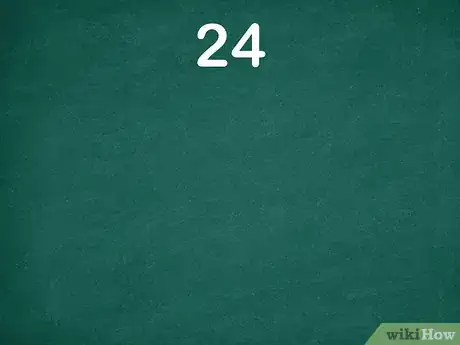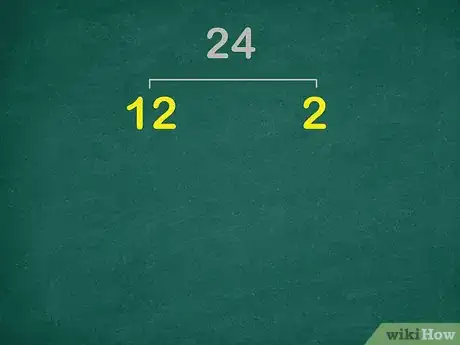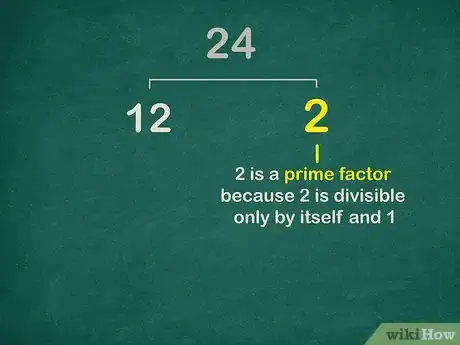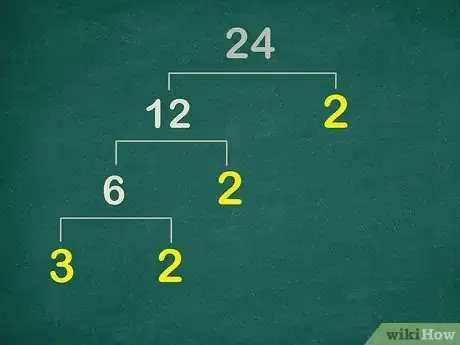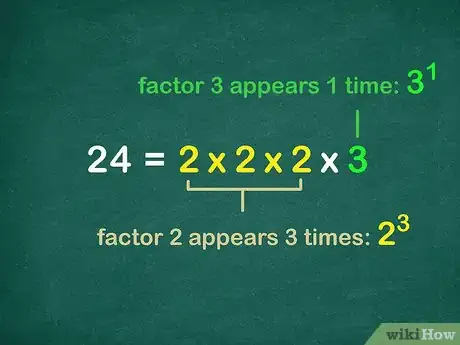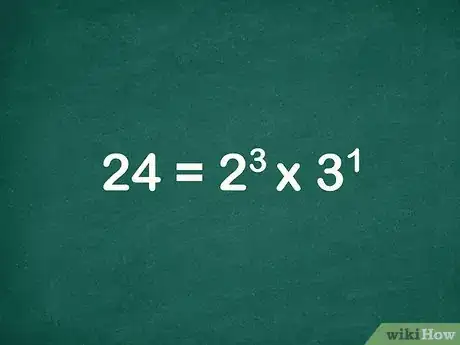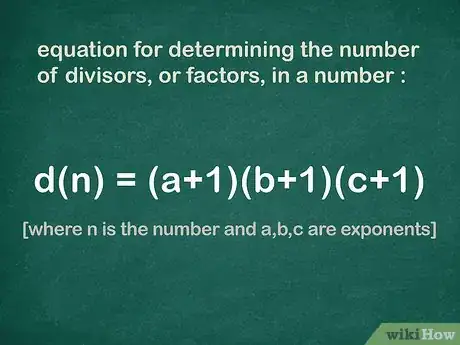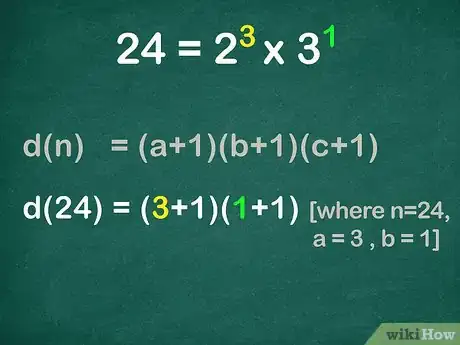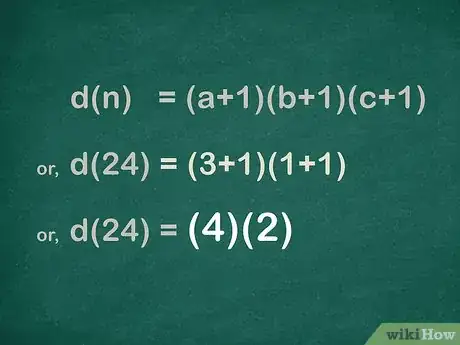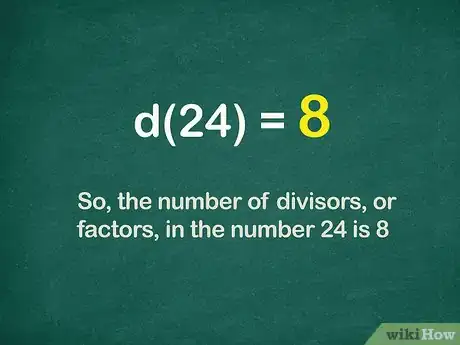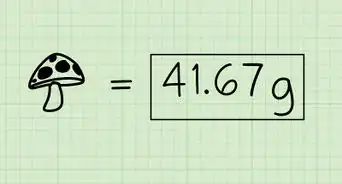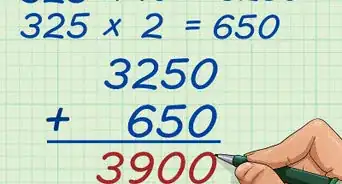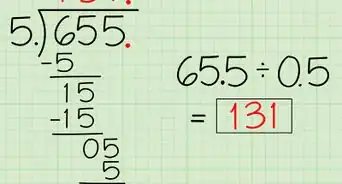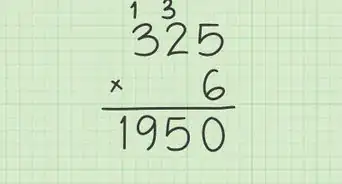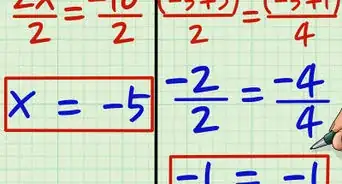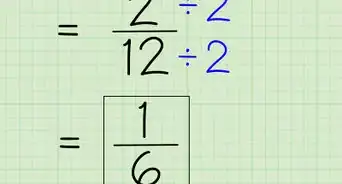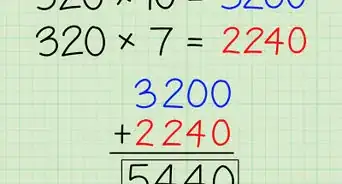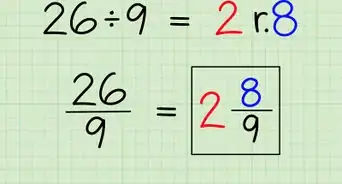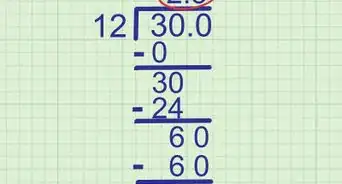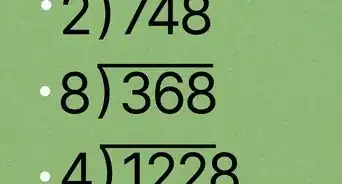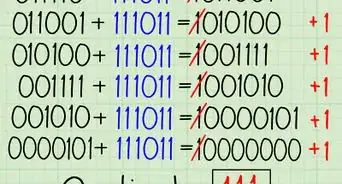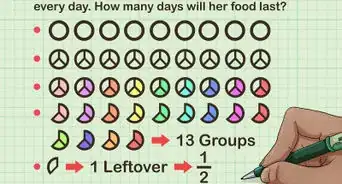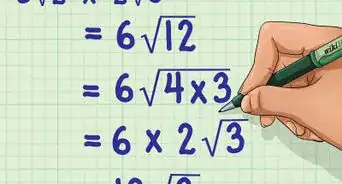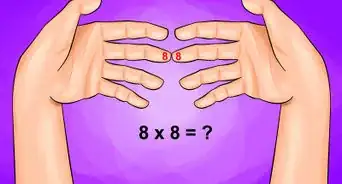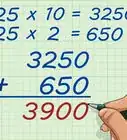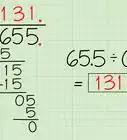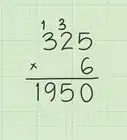This article was co-authored by wikiHow Staff. Our trained team of editors and researchers validate articles for accuracy and comprehensiveness. wikiHow's Content Management Team carefully monitors the work from our editorial staff to ensure that each article is backed by trusted research and meets our high quality standards.
There are 7 references cited in this article, which can be found at the bottom of the page.
This article has been viewed 198,564 times.
Learn more...
A divisor, or factor, is a number that divides evenly into a larger integer.[1] It is easy to determine how many divisors a small integer (such as 6) has by simply listing out all the different ways you can multiply two numbers together to get to that integer. When working with larger integers, finding the number of divisors is more difficult. However, once you have factored the integer into prime factors, you can use a simple formula to reach your answer.
Steps
Factoring the Integer
-
1Write the integer at the top of the page. You need to leave enough room so that you can set up a factor tree below it. You can use other methods to factor a number. Read Factor a Number for more instructions.
- For example, if you want to know many divisors, or factors, the number 24 has, write at the top of the page.
-
2Find two numbers you can multiply together to get the number, not including 1. These are two divisors, or factors, of the number. Draw a split branch coming down from the original number, and write the two factors below it.[2]
- For example, 12 and 2 are factors of 24, so draw a split branch coming down from , and write the numbers and below it.
Advertisement -
3Look for prime factors. A prime factor is a number that is only evenly divisible by 1 and itself.[3] For example, 7 is a prime number, because the only numbers that evenly divide into 7 are 1 and 7. Circle any prime factors so that you can keep track of them.
- For example, 2 is a prime number, so you would circle the on your factor tree.
-
4Continue to factor non-prime numbers. Keep drawing branches down from the non-prime factors until all of your factors are prime. Circle the prime numbers to keep track of them.[4]
- For example, 12 can be factored into and . Since is a prime number, you would circle it. Next, can be factored into and . Since and are prime numbers, you would circle them.
-
5Write an exponential expression for each prime factor. To do this, look for multiples of each prime factor in your factor tree. The number of times the factor appears equals the exponent of the factor in your exponential expression.[5]
- For example, the prime factor appears three times in your factor tree, so the exponential expression is . The prime factor appears 1 time in your factor tree, so the exponential expression is .
-
6Write the equation for the prime factorization of the number. The original number you are working with is equal to the product of the exponential expressions.[6]
- For example .
Determining the Number of Factors
-
1Set up the equation for determining the number of divisors, or factors, in a number. The equation is , where is equal to the number of divisors in the number , and , , and are the exponents in the prime factorization equation for the number.[7]
- You might have less than three or more than three exponents. The formula simply states to multiply together whatever number of exponents you are working with.
-
2Plug in the value of each exponent into the formula. Be careful to use the exponents, not the prime factors.
- For example, since , you would plug in the exponents and into the equation. Thus the equation will look like this: .
-
3Add the values in parentheses. You are simply adding 1 to each exponent.
- For example:
- For example:
-
4Multiply the values in parentheses. The product will equal the number of divisors, or factors, in the number .[8]
- For example:
So, the number of divisors, or factors, in the number 24 is 8.
- For example:
Community Q&A
-
QuestionIs 8 the number of divisors excluding the numbers 24 and 1? Would 10 be a more apt answer?
 Community AnswerNo. The 8 divisors include the factors 24 and 1. To see this, you can list out all the ways to multiply two numbers to get to 24, and count all the unique factors. 1 x 24 2 x 12 3 x 8 4 x 6 So, as shown above, there are 8 different divisors of 24, including 1 and 24.
Community AnswerNo. The 8 divisors include the factors 24 and 1. To see this, you can list out all the ways to multiply two numbers to get to 24, and count all the unique factors. 1 x 24 2 x 12 3 x 8 4 x 6 So, as shown above, there are 8 different divisors of 24, including 1 and 24. -
QuestionHow do you find the odd divisors of an integer?
 Community AnswerOne way to do this would be to make a factor tree, and then look for all of the odd divisors.
Community AnswerOne way to do this would be to make a factor tree, and then look for all of the odd divisors. -
QuestionWhat is the sum of the divisors of 600?
 DonaganTop AnswererThe sum of the divisors is 19. The number of divisors is 6.
DonaganTop AnswererThe sum of the divisors is 19. The number of divisors is 6.
References
- ↑ https://www.mathsisfun.com/definitions/divisor-of-an-integer-.html
- ↑ https://www.mathsisfun.com/definitions/divisor-of-an-integer-.html
- ↑ http://www.mathwarehouse.com/dictionary/P-words/definition-of-prime-number.php
- ↑ https://www.math.uci.edu/~mathcircle/materials/M7L1.pdf
- ↑ https://www.chilimath.com/lessons/introductory-algebra/prime-factorization-of-an-integer/
- ↑ https://www.cuemath.com/prime-factorization-formula/
- ↑ http://mathschallenge.net/library/number/number_of_divisors
- ↑ https://www.cuemath.com/numbers/factors/
About This Article
If you need to determine the number of divisors of an integer, factor that integer and write the equation for the prime factorization of the number. Plug in the value of each exponent into the formula for determining the number of divisors, or factors, in a number. Once you’ve put the values into the formula, add the values in parentheses, then multiply all of the values in the parentheses. The product will equal the number of divisors in the integer. To learn the formula for determining the number of divisors, keep reading!
